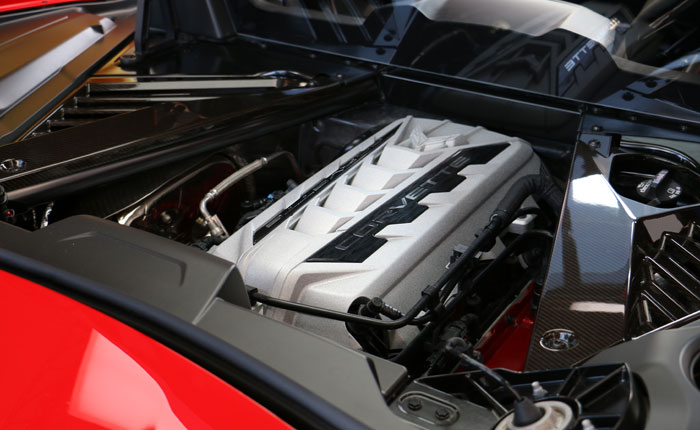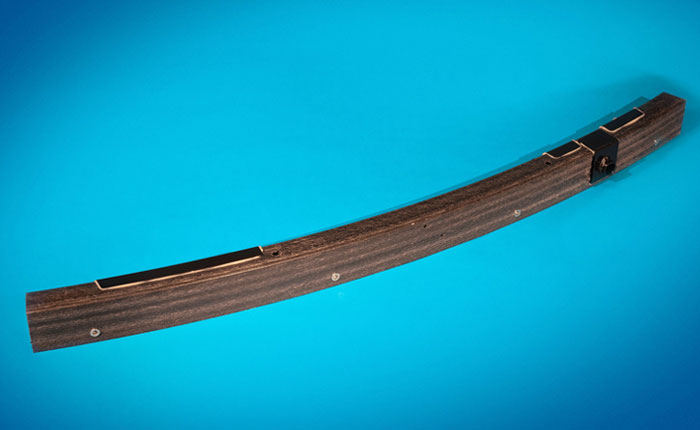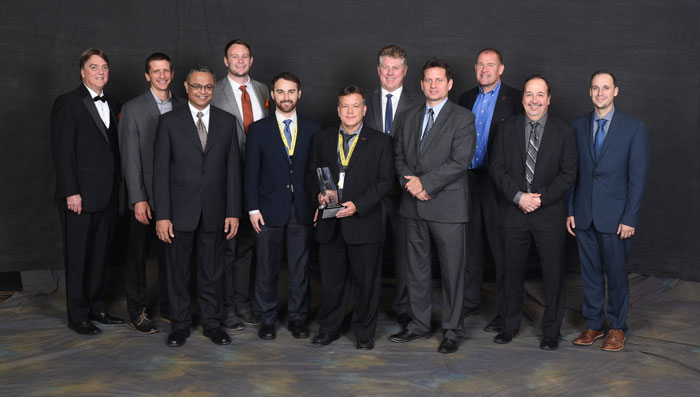Have you ever stopped to think how smart the people are who have designed the new eight-generation Corvette?
For the techno-nerds out there, a website called Composites World (did you even know there was such a publication?) is currently taking a two-part look at the role composites play in making the 2020 Corvette one of the top supercars in the world, regardless of price.
Naturally, the switch to a mid-engine platform forced Chevy engineers to take a fresh look at all the ways they do things. “At one point,” admits Ed Moss, Corvette body structure engineering group manager, “everything was on the table as we discussed the best way to design and build each system.”
For example, something as simple as the material to be used for the wheelhouses was up for debate. “If we’d kept the C7’s composite wheelhouses,” Moss explains, “we’d have to bond to the hinge pillar (A pillar), which is immediately adjacent to the front wheel in a mid-engine vehicle, leaving very little package space. We went with metal there.”
Believe it or not, the team even considered metal body panels instead of the traditional composite materials used since 1953, but “it would’ve been economically infeasible to create the C8’s styling lines in metallics,” he said.

Feeding air to the powerful LT2 engine, now sitting behind the passengers, was another big concern, according to Chris Basela, body structure lead engineer.
“We tried all kinds of designs that forced air to take really torturous paths, creating eddies and flows we didn’t want,” Basela says. “It took lots of iterative work with the powertrain team to develop the best path for airflow because the car needs to breathe freely with no restriction.”
They also needed access to the air box, had to work around rear trunk space, and had to take heat and engine noise in the passenger compartment into consideration, Basela says, noting that air quality in the cabin was of paramount importance due to changes in European laws about VOCs (volatile organic compounds).
The C8 is the fourth generation of Corvette to use a three-layer, multi-material body structure for the frame, body structure, and body panels. Reports Composite World: “This layered hybrid structure not only provides affordable lightweighting in high production volumes but also permits multiple vehicle variants to be produced at low tooling investment. In fact, for the current C8, GM managed to produce all Class A composite body panels (bonded inners and outers) on both coupe and convertible using just 20 tools.”

Despite having an open roof in both the coupe and convertible, Chevy again managed to make the new C8 stiffer than the previous generation, some 13.79 percent stiffer than the C7, in fact. Helping with that achievement were two composite parts, one directly attached to the frame structure (rear bumper beam) and another attached to the underbody (lower tunnel closeout). The rear bumper beam, by the way, is curved to match the rear styling and is the industry’s first curved pultruded part. Don’t know what that means, but it sounds impressive, doesn’t it? The lower tunnel closeout, meanwhile, is made of three layers of glass fiber preform and contributes more than 10 percent of the C8’s torsional rigidity, acting as a primary load path during a crash and serving as an access door.
It’s obvious that GM is on a mission to bring its manufacturing processes into the 21st century, and we believe that’s one reason they’re able to offer the C8 at such a bargain price. One such process, first developed for the 2016 Corvette, is laser ablation, which replaces hand sanding and cuts labor, time and cost as well as eliminating dust and improving repeatability.

As we pointed out at the beginning of this story, aren’t you glad such smart people are collaborating to make our eighth-generation Corvette as great as possible?
You can check out the full coverage of the C8 Corvette’s composite and unique materials over at Composites World.
Source:
CompositesWorld.com
Related:
The 2020 Corvette Earns a Spot on Wards 10 Best Interiors for 2020
The C8 Corvette Stingray is Named MotorTrend’s Car of the Year
REPORT: Corvette Ranks 5th on the 2019 Most American Made Cars from Cars.com
-


![[VIDEO] 2024 Corvette E-Ray Bullies a Nissan GTR and a Lamborghini Aventador SV at the Drag Strip [VIDEO] 2024 Corvette E-Ray Bullies a Nissan GTR and a Lamborghini Aventador SV](https://www.corvetteblogger.com/images/content/uploads/2024/04/041824_3-218x150.jpg)
![[VIDEO] More Quarter Mile Action with the All New 2024 Corvette E-Ray [VIDEO] More Quarter Mile Action with the All New 2024 Corvette E-Ray](https://www.corvetteblogger.com/images/content/uploads/2024/04/041824_2b-218x150.jpg)

I know all about pultrusion (the rear carbon fiber bumper) and it is a huge feat to make a curved pultrusion! Pultrusion is a linear process – long fiberglass fibers or, in this case carbon fibers, from rolls are pulled into a liquid bath of resin then pulled through a heated die of the shape of the part you want. It’s called pultrusion because you can’t push fiberglass/ carbon strands. This process is used to make fiberglass structural shapes like I beams, channels, round or square tubes of straight continuous lengths for construction. Making a curved shape, like the rear bumper, is something very new and innovative in the composites industry.
Thanks for the explanation, Ken!
When I want real Corvette content, the Corvette Blogger is where I keep finding it. This was an amazing explanation of some of the design and material elements that were incorporated in building the 8th generation Corvette and we are now in on some of the secrets. The more I know about this car, the more I realized that I did the right thing in finding one and getting into it. It also makes me want to be very careful. This kind of construction makes the car handle like I can’t believe, but an accident will cause the car a whole lot of damage to very exotic and special materials. That’s why I’m not too upset with only 750 miles on the car so far. AF
Comments are closed.